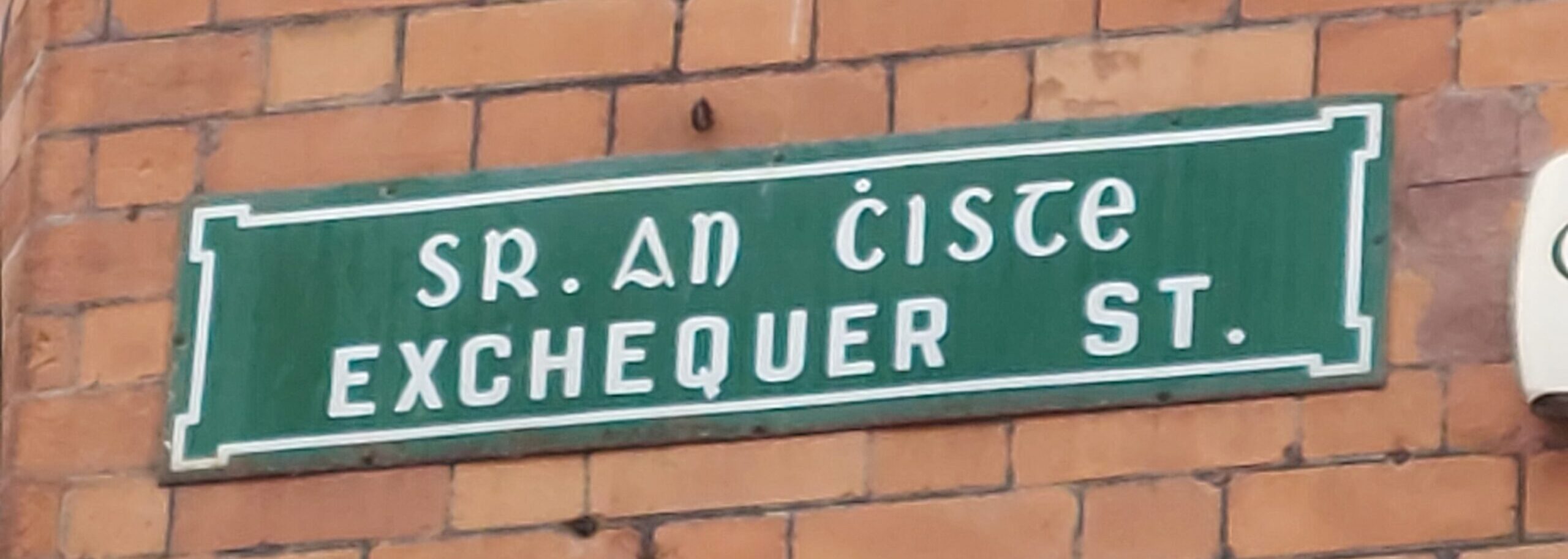Do you have historic photographs of Dublin street signage in the cló gaelach?
Or stories about how the street came to be named? I would love to hear from you!
Submitting photographs
If you are interested in submitting old or modern photographs of cló gaelach signs, please email them to closcape@outlook.com together with a Depositor Consent Form. This form indicates that you are happy to deposit your photos for public use in the Irish Historic Street Signs Archive I am building. I will not use any photos without your express consent, so please don’t forget to include the form. Thank you!
***Thanks to everyone who has emailed with photographs and information already. As my inbox is filling up fast, it may take me a few days to respond to you. Thank you for understanding!***
The CLÓSCAPE project

In 2023-25 I am running a new pilot project called CLÓSCAPE, generously funded by the Trinity Long Room Hub Research Incentive Scheme 2023-25. This project investigates the history of cló gaelach street signage in Dublin city. Little is known about the roll-out or distribution of this signage and no survey currently exists. As part of this project, I am creating a new survey, which will be published as the Irish Historic Street Signs Archive (Dublin) on the Digital Repository of Ireland. This will make the photographic history of the signage available to the public and to researchers alike and help me reconstruct the history of their placement.
What is the cló gaelach?
The cló gaelach is the Irish term for the typeface used to represent Irish script. It represents the letter forms used to write Irish throughout most of its long history – these letter forms go back as far as the sixth century! You will recognize them as the script used in Irish manuscripts as well as on shop and pub fronts. Up until recently, most people in Ireland would have learned to write in the Irish script, but it was phased out in official use in the 1960s.

Here is a beautiful writing sample from a thirteen year old boy made in the 1930s now part of the Schools Collection within the National Folklore Collection at UCD.
“The Schools’ Collection, Volume 1122, Page 45” by Dúchas © National Folklore Collection, UCD is licensed under CC BY-NC 4.0.
And this is the same script in an early fifteenth century manuscript, RIA 23 P 16, p. 83.


Finally, here is a beautiful copy of the text Suim Riaghlacha S[an] Phrionsias printed in the cló gaelach by the Irish Franciscans in Louvain in 1614, made available by the Marsh Library as part of the Marsh’s Library Exhibits.
Feel free to leaf through my presentation on the CLÓSCAPE project delivered at the Trinity Arts and Humanities festival on Sept 9 2024.












